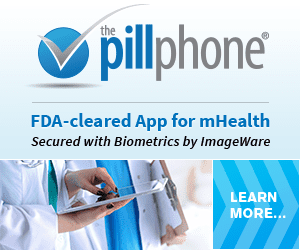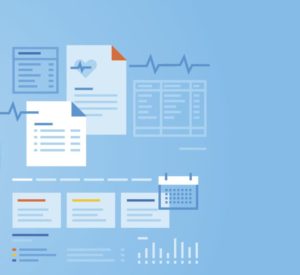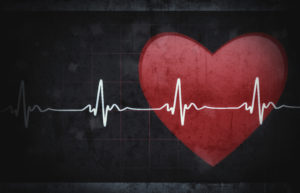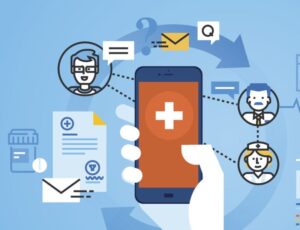Did you know your heartbeat — the rhythm and timing in which your heart pumps — is unique to you? There are actually wearables that can measure this and convert your heartbeat into a kind of passcode. Amazing, right?
Biometrics, in general, have the capacity to transform nearly every industry, one of which is the health and IT security market.
Data security is critical in the healthcare industry. It’s why policies like HIPAA exist. Any and all health-related data must be protected from a breach. It doesn’t help that high-profile hacks are becoming more common for businesses big and small. It’s a matter of time before medical records are targeted, which often hold sensitive info about patients and providers.
Biometrics are a great way to lock down medical records, but are they really the key to the health IT industry, particularly when it comes to security?
Biometrics As a Patient Identifier

Because biometrics are unique, they are particularly great at serving as a patient ID. Imagine having health records tied to your biometrics. No matter where you went or where you were treated, a scan of your fingerprint could bring up those records for medical staff.
That is the kind of technology we’re talking about here. What about times where you are unconscious and can’t provide your name or health info? The medical staff could easily scan your biometric data and get what they need.
Then there are co-location benefits. When patients have to transfer from one facility to another, their digital information could instantly go with them.
Biometrics will reduce instances of fraud, too. It takes a great deal of skill and effort to get usable biometric data from a person. You can’t walk into a business, hospital or office and use biometrics to access a stranger’s data.
Biometrics As a Safety Precaution
 With biometrics, medical staff can still access your data if you’re, say, unconscious or unable to respond. That doubles as a safety precaution, like when a patient is allergic to certain medications, treatments or has a rare ailment.
With biometrics, medical staff can still access your data if you’re, say, unconscious or unable to respond. That doubles as a safety precaution, like when a patient is allergic to certain medications, treatments or has a rare ailment.
More importantly, digital content can be optimized much better than physical records. Picture this:
- A doctor is meeting you for the first time during an emergency, and neither of you know exactly what is wrong.
- Yes, they use experience and medical knowledge for diagnosis, but they also use past records — something you’ll never see in a procedural TV show.
- Normally, they would have to take documents and view them page-by-page to find signs of what may be wrong. With biometric data, they can use software to immediately identify problems.
If you can diagnose patients faster, you can save lives faster. Biometrics, in combination with digital software, could save an endless number of lives. And we are only scratching the surface here.
Obviously a few changes will be in order at hospitals and medical centers. New biometric technology will also require on-call IT teams to take care of problems or interruptions in service. For example, equipment calibration should be conducted by ISO-certified professionals, and no doubt the same would be necessary for biometric gear. But really, that’s a small price to pay for better safety.
Biometrics As a Way to Secure Electronic Health Records
 A new digital system has emerged —the electronic health record, or EHR. It is a digital version of a patient’s health chart, including info on everything from past treatments to genetic susceptibilities.
A new digital system has emerged —the electronic health record, or EHR. It is a digital version of a patient’s health chart, including info on everything from past treatments to genetic susceptibilities.
They are “real-time” records, which means they can be accessed and viewed instantly, but only by authorized users. Your mother, for example, cannot just walk into a medical facility and pull up your records, unless you’re a minor and it’s warranted.
Biometric tech can lock down these records indefinitely, allowing access only to authorized users. This also means digital red flags could be set up to track unauthorized access. So someone illegally accessing medical records could be reported to the proper authorities.
A true benefit of “smart” tech like wearables and healthcare devices is the automation they introduce. All these authentication procedures can be automated and monitored in real-time.
A Few Key Snags
There are a few negatives to be had as well.
 The biggest is the high costs associated with biometric hardware. The money required to deploy many systems can be exorbitant. However, that can easily be outweighed by the productivity, accuracy and security benefits, so it’s more of a case-by-case decision.
The biggest is the high costs associated with biometric hardware. The money required to deploy many systems can be exorbitant. However, that can easily be outweighed by the productivity, accuracy and security benefits, so it’s more of a case-by-case decision.
Then you must heed the requirements for adopting new systems, equipment and technologies. Medical staff will need to be trained to use the new equipment and systems. But IT professionals must be ready to step in. We can’t have doctors and nurses rushing to reboot servers in the event of a system failure. It would take away from patient treatment, and most hospitals are already understaffed.
Finally, if wearables are adopted, who is on the line to pay? Let’s say patients receive a wearable to verify identity and access medical health records. Is the patient responsible for paying for it? Will their insurance policy cover it? Should the hospital pay? The answer will be ironed out, but for now, it’s slippery slope and requires more research.
To deploy or not to deploy, that is the question. Going by the benefits offered, including what we discussed above, deploying is certainly the better answer of the two. That said, it’s not without its caveats.
 Kayla Matthews is a health IT and technology writer whose work has appeared on Motherboard, VentureBeat, MakeUseOf and BioMed Central. To read more posts from Kayla, check out her blog.
Kayla Matthews is a health IT and technology writer whose work has appeared on Motherboard, VentureBeat, MakeUseOf and BioMed Central. To read more posts from Kayla, check out her blog.
Healthcare Month 2017 is made possible by our sponsor: ImageWare Systems


Follow Us